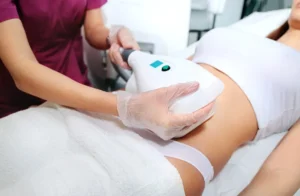
A hernia arises when an organ or tissue protrudes through an opening in the surrounding muscular wall. This condition is prevalent among men and women of various age groups and can cause discomfort and pain. To understand more about hernias, let’s explore their causes, symptoms, and treatment options.
Causes of Hernias
Hernias are caused by a combination of factors, including increased pressure in the abdominal cavity, muscle weakness, and repetitive heavy lifting or straining. Aging, pregnancy, obesity, chronic coughing, constipation, and smoking are also contributing factors that may increase the risk of developing a hernia. If you are experiencing the symptoms, consult a qualified healthcare professional for hernia repair in Baltimore who can diagnose the underlying causes and suggest appropriate treatment options.
Types of Hernias and Their Symptoms
There are several types of hernias, each with unique symptoms:
- Inguinal hernia – The most common type, accounting for around 70% of all hernias. Inguinal hernias occur when intestines push through the lower abdominal wall near the inguinal canal. Symptoms include pain or discomfort in the groin, especially when lifting, bending, or coughing.
- Femoral hernia – A rare type of hernia that mostly affects older women. It occurs when fatty tissue or a part of the intestine pushes through the groin close to the femoral vein. Femoral hernias may cause a lump in the groin, with pain and discomfort during physical activities.
- Umbilical hernia – Common in newborns, pregnant women, and obese individuals. This hernia occurs when a portion of the intestines pushes through the abdominal wall near the navel. Signs include a noticeable bulge near the belly button, which may become painful and tender.
- Incisional hernia – A type of hernia that develops after abdominal surgery, where the tissue protrudes through the surgical wound. Symptoms include a noticeable bulge near the incision site and pain or discomfort when coughing, lifting, or engaging in physical activity.
- Hiatal hernia – Occurs when the stomach pushes through the diaphragm’s opening into the chest cavity. Symptoms include heartburn, chest pain, and difficulty swallowing.
Treatment Options for Hernias
Treatment options for hernias depend on the severity and type. Mild hernias may be managed through conservative methods like wearing a truss to support the hernia and relieve pain. However, if the hernia is large, painful, or obstructing blood flow, surgery is usually necessary.
Signs You May Need Hernia Surgery
Hernia surgery may be suggested if the hernia is causing severe pain, digestive issues, or other complications. It may also be necessary if the hernia is growing larger or becoming more symptomatic. Consult a hernia specialist who can perform a complete evaluation and recommend the best course of treatment for your specific condition. You may also check out this blog to learn more about the signs of hernia.
Other Factors to Consider
Laparoscopic surgery is a minimally invasive option that involves using a small camera and specialized instruments to repair the hernia. This technique often results in less pain, quicker recovery times, and reduced scarring compared to open surgery. One commonly used method is hernia mesh repair, a procedure in which a synthetic material is used to reinforce the abdominal wall and support the affected tissue. By knowing how long hernia mesh repair lasts, patients can decide about their treatment options.
Lastly, it is essential to take preventive measures to minimize the risk of developing a hernia. Maintaining a healthy weight, avoiding smoking, and practicing proper lifting techniques are some steps you can take to prevent hernias from occurring.
Conclusion
Hernias can cause discomfort and disrupt daily activities, but timely intervention can help alleviate symptoms and prevent further complications. If you suspect you have a hernia, consult a capable healthcare professional for an accurate diagnosis and personalized treatment plan. And remember to maintain a healthy lifestyle to reduce the risk of developing hernias in the future.






